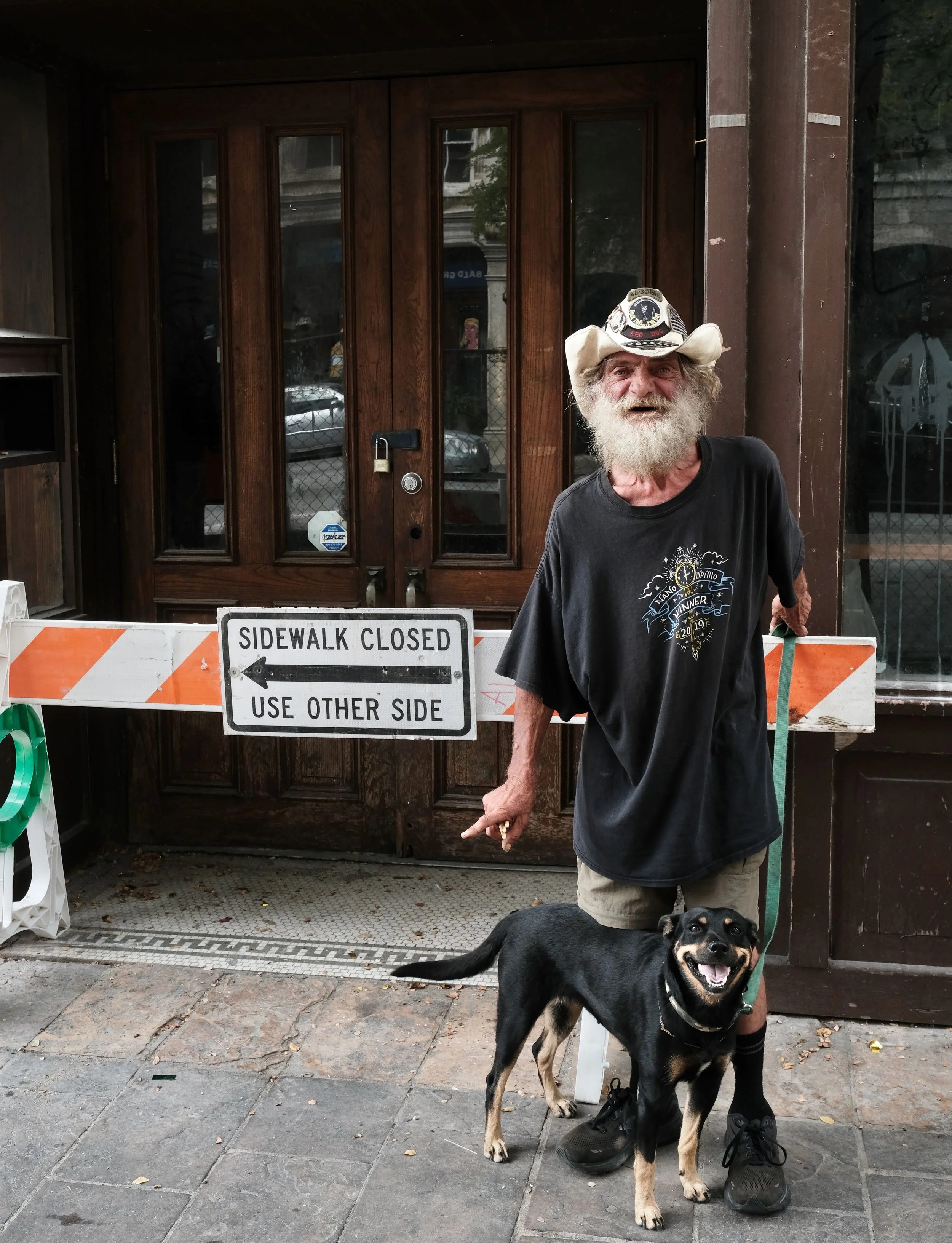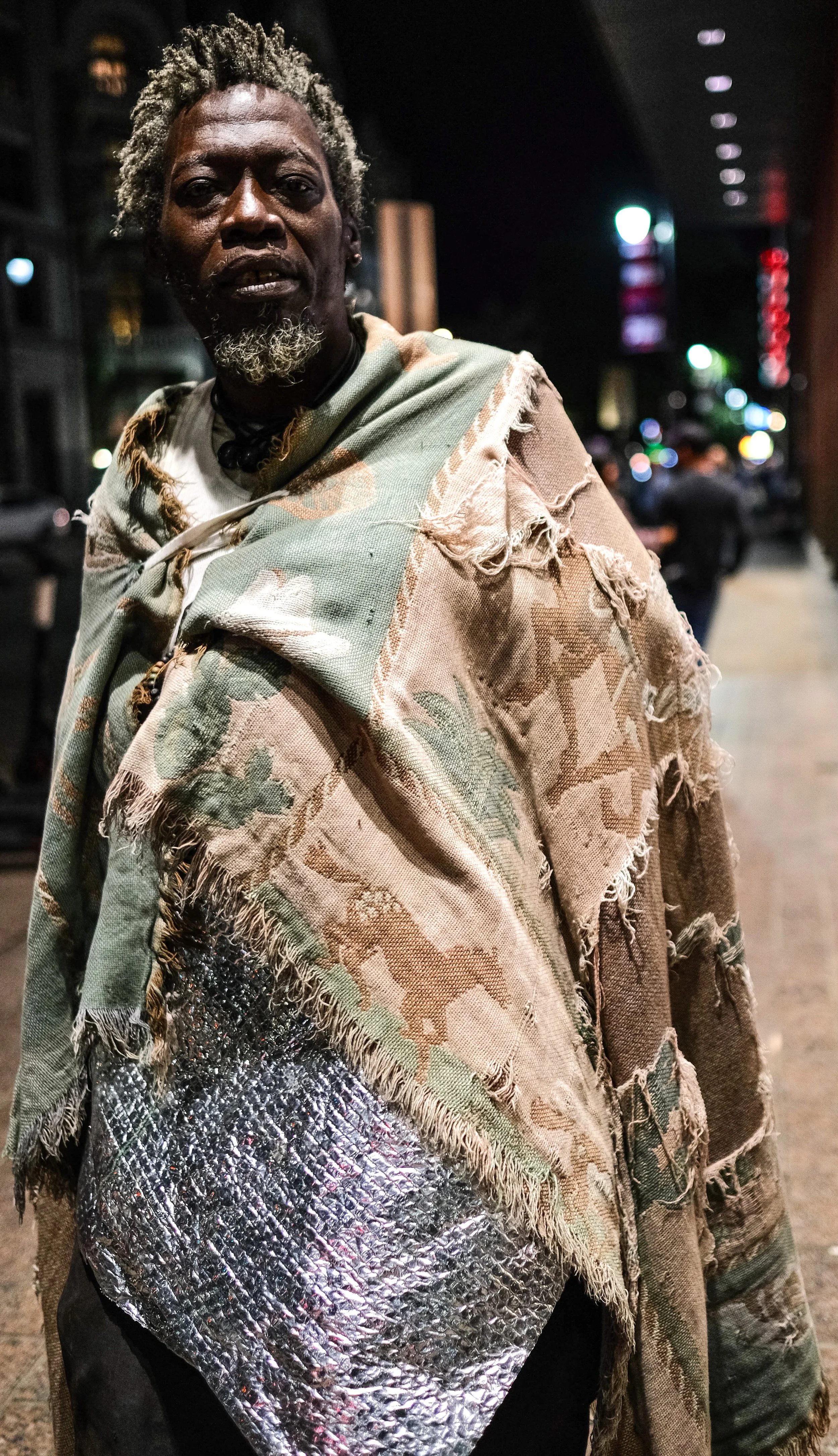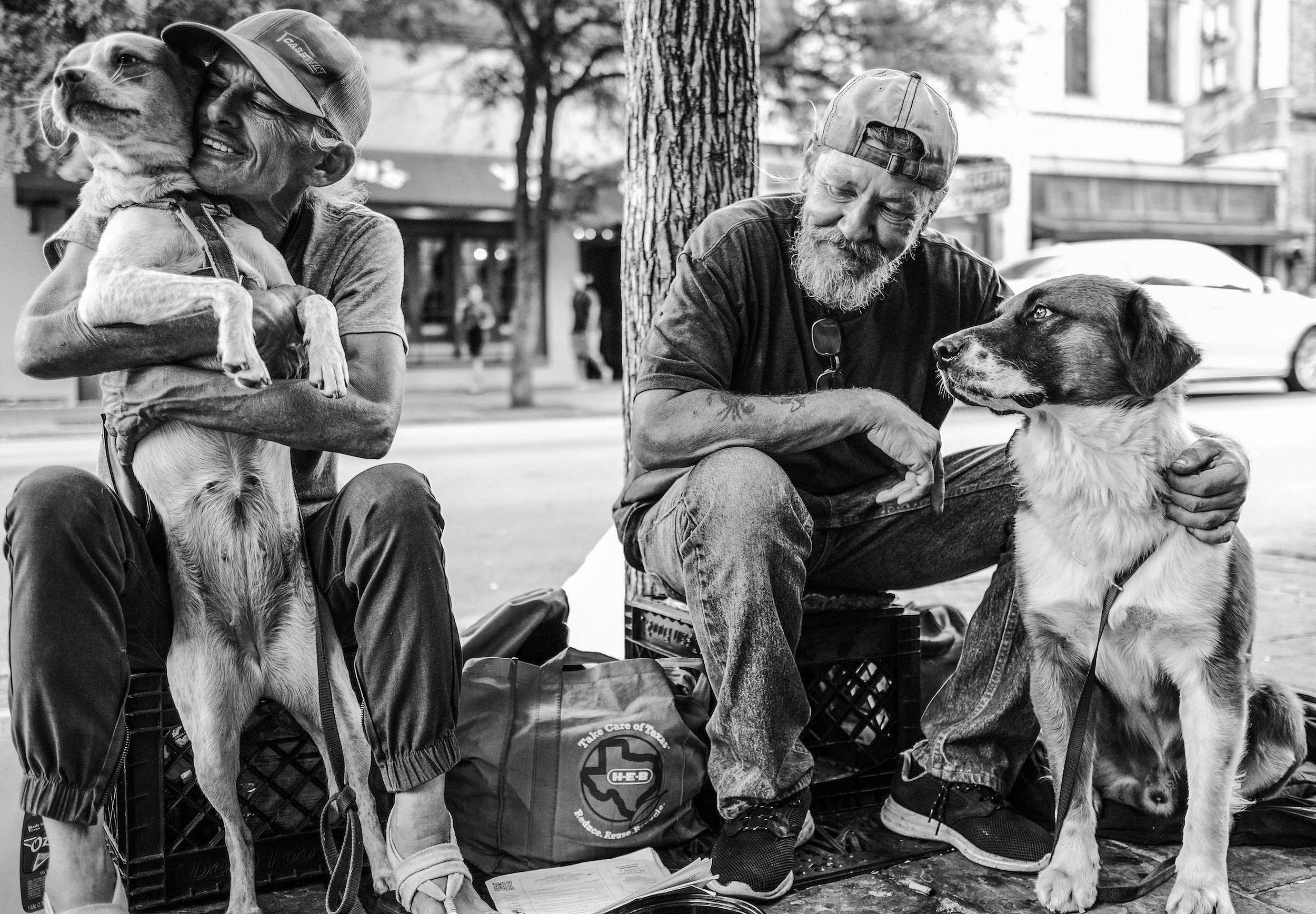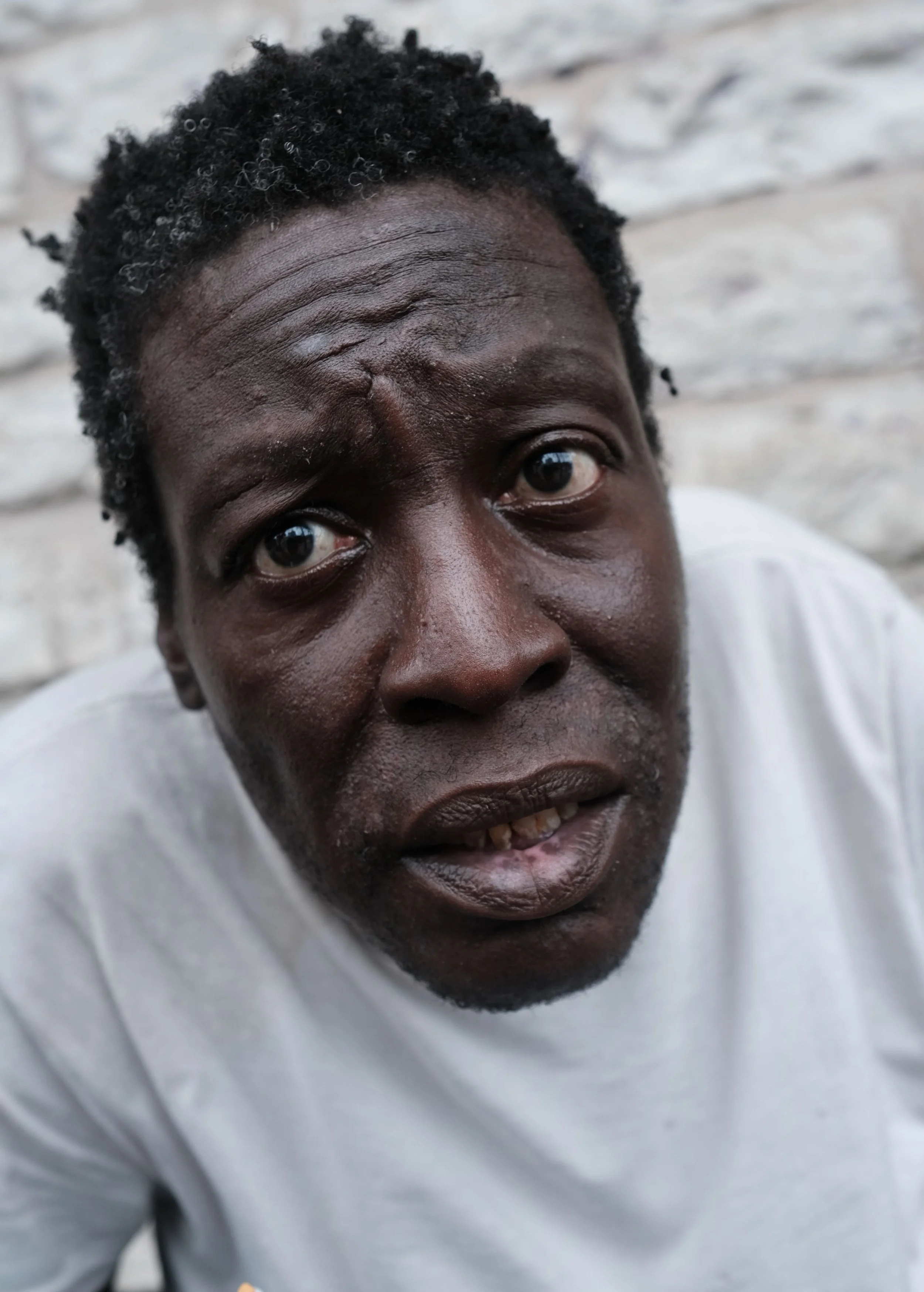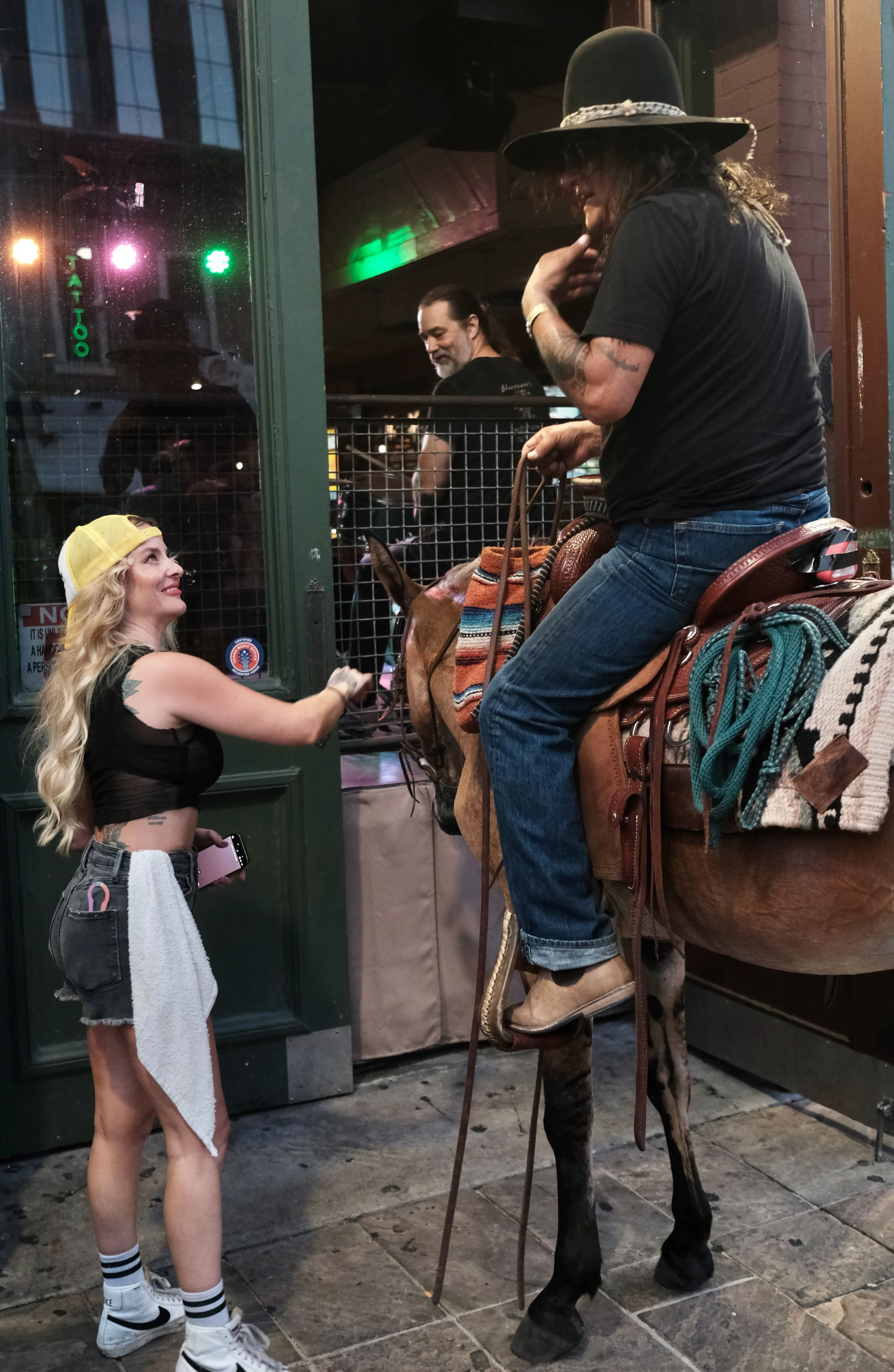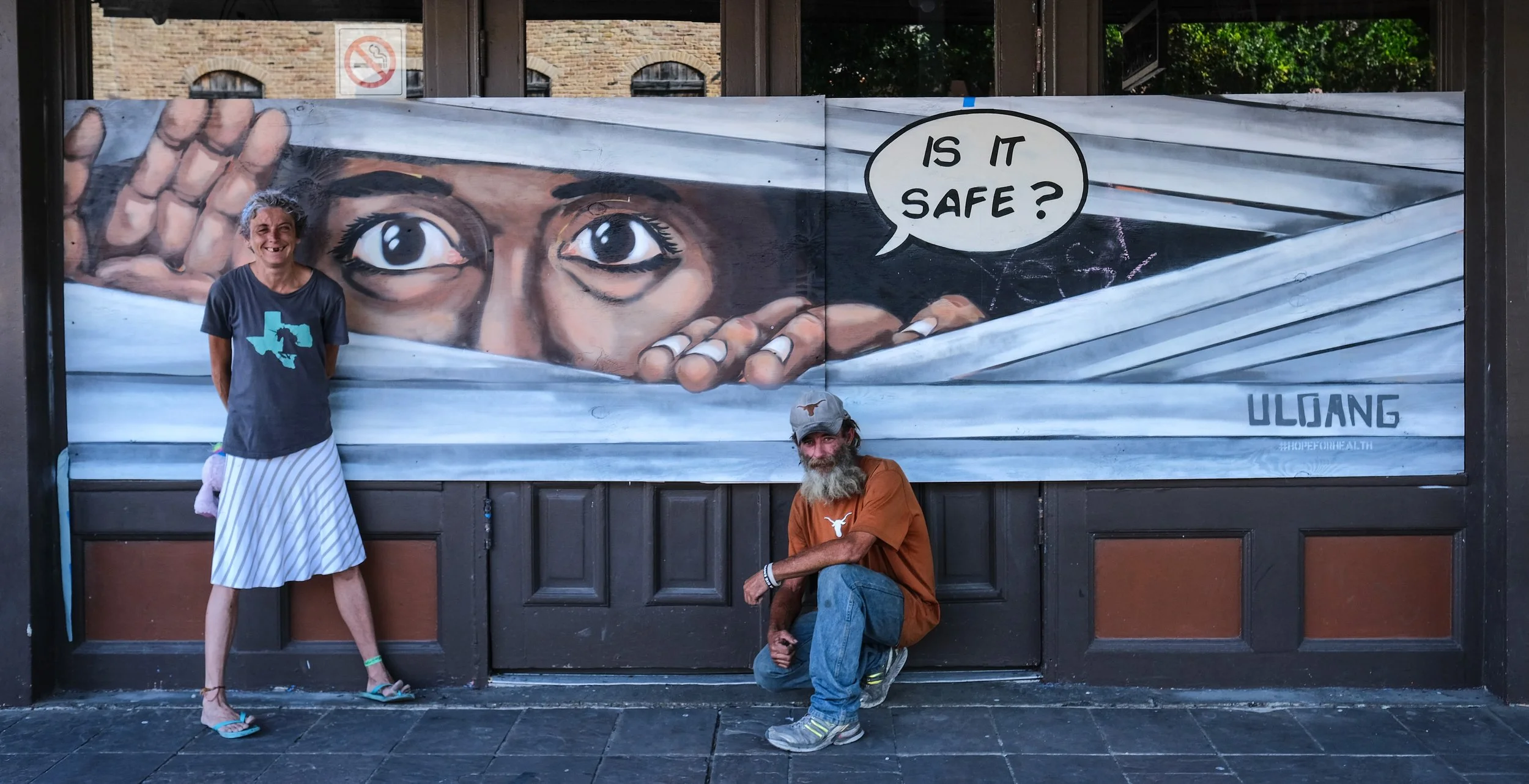The Souls of Sixth Street is an examination of Austin’s most storied thoroughfare, where wildly divergent intersections come together to create a one-of-a-kind community.
Nearly a decade ago, in February 2016, I began photographing the unhoused population of Sixth Street and downtown Austin. Over time, as I formed closer relationships with people living on the street, I came to realize I was documenting layers of poverty and addiction in relation to the everyday workings of East Sixth, a National Register historic district marked by its gorgeous Victorian commercial architecture.
The street features both the mundane and the intoxicating: The delivery trucks making weekday business stops. The musicians lugging their gear into bars. The door guys chatting up potential customers, sweet talking and enticing people to come inside for live music and drinks. The party and comedy club crowd now packing the sidewalks, instead of Sixth Street itself, which in a controversial move was reopened to weekend vehicular traffic in January 2025. The street is now partially lined with painted concrete barriers: a needed safety feature for pedestrians, city officials say, and a hindrance to business, according to a number of bar owners and managers.
On this fluid and unpredictable landscape, I continue to shape my view of Sixth through the relationships I have built with those experiencing chronic homelessness. I have lost friends to heat stroke, cancer, and gunshot wounds. On the street, I carry cigarettes, cash, and Narcan. I have witnessed drug overdoses in alleys and on sidewalks. I spend time in hospitals and at nursing homes with individuals I know. A little-known fact is that some members of the unhoused community work for bars up and down the street, forming lasting relationships with their employers.
Over the past couple of years, I have made it my mission to photograph the before and after on Sixth, a place facing certain change — gentrification, in the eyes of some — because of redevelopment that is already under way under the direction of the Dallas-based Stream Realty firm. I enjoy friendly connections with both the security guards who help protect Stream Realty’s multiple properties and with the crews who are constructing new store fronts, recycling the treasured bricks of historic buildings as part of their work.
Controversy and uncertainty abound on Sixth. Gone is the legendary Pecan Street Festival, now being held in Bee Cave, west of Austin, because of negotiations that stalled between festival and city officials over fencing and barriers on Sixth. At issue was the financial losses that event vendors faced in setting up on reconfigured Sixth, where they would have been forced to erect fewer booths.
My Sixth Street documentary project is deeply personal. I constantly meet new people. And I return to individuals I know, photographing them time and again and documenting the changes of life and the signs of stress and aging that I know my friends must also surely see in me.


























